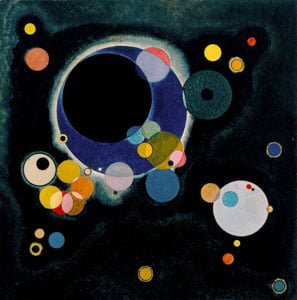

Currently 92. This has been his jam for quite some time.
[He’s still been putting out solid art in the past four years[https://www.artsy.net/artist/richard-estes?major_periods[0]=2020], which is very impressive.


Currently 92. This has been his jam for quite some time.
[He’s still been putting out solid art in the past four years[https://www.artsy.net/artist/richard-estes?major_periods[0]=2020], which is very impressive.
Vine borers? I bravely (stupidly) went for it again thos year and things seem to be growing pretty well so far. Fingers crossed! I am applying a liberal dose of insecticidal soap weekly this year.
If you were trying to get in and out quickly, that could explain the soft photo. You might be able to figure out where the camera was trying to focus using Canon’s image editing software, whatever that might be (sorry, not a canon person).
I agree with the sentiment of the post above this one, so I’m chiming in here.
At 55mm and 1/125, this photo stood a good chance of being sharp unless you have very unsteady hands. Where was your intended focal point? That could help point to what went wrong (eg the intended focal point could be better located, the camera missed focus, the camera moved during the exposure causing blur, etc).
Glad you found the site useful! Good luck in your quest.
If volume is your sole consideration, the G1X III will be hard to beat. if you didn’t already try it, here it is dropped into the comparison.
As for advances in IQ, IMO the gains haven’t been that large. The big changes are:
Other than that, everything else is largely quality of life. Easier AF, faster sensor readout that enabled me to keep my A9 in electronics shutter mode basically all the time, overall speed (focus fast and take a ton of photos), computational photography (like high resolution shots, etc).
I have a 3k digital picture frame and when photos from my old D40 show up on it, I’m always surprised by how well they hold up. Great colors, good dynamic range, etc.
For anyone scratching their heads (my D5300 had a built in GPS!) - most current cameras rely on a companion phone app for GPS coordinates. Some do this better than others. Here’s my experience, based on my understanding of how each system works.
Three ideas.
First, are you taking photos of static or dynamic subjects? In other words, can you push your shutter speed down to make up for lost light? If yes, it doesn’t really matter which sensor format you go with. As an added bonus, M43 stabilization is stupid good so you might even be able to skip the tripod.
Second, there’s no beating a fast FF lens on a FF body but those are going to be big and expensive. Here’s a quick comparison. The Sony lens is 1.7 pounds and costs $2,000 new vs the Oly’s 0.9 pounds and $1,200 price tag. There are super fast third party E-mount options that will save some $$, but no weight (hi Sigma), and slower first and third party options that will save $$ and weight, but will also start to eat into the two stop advantage FF sensors enjoy in low light. For example, Sigma’s 50mm f/2 lens, which weighs 0.75 pounds and costs $640, will leave you with around 2/3 stop advantage in low light. It’s still an advantage, and it even costs and weighs less than the Oly, but it’s not a large advantage in terms of dynamic range.
Finally, with a fast FF lens you’re going to be facing a fairly narrow depth of field wide open. That 50mm f/1.2 FF lens will give you a 0.11m depth of field wide open with a subject that’s 2m away. If you want the extreme background of your image sharp, everything closer than 35m will be out of focus. Conversely, that 25mm f/1.2 MFT lens will give you a 0.23m depth of field with a subject that’s 2m away and with infinity acceptably sharp you’ll have a sharp foreground subjects 17.5m and further away from the camera. Stopping down the FF lens will increase its depth of field, but will again eat into the inherent advantage a FF body has over a M43 body.
There aren’t many DSLR like fixed lens cameras out on the market today as that segment has basically evaporated.
The remaining players are:
What are you looking for that the G1X mkIII doesn’t offer? Buying a used copy might be the way to go, especially since it sounds like what you’re looking for.
As far as currently in production options, in addition to the three above, you could also look at mirrorless. Both their bodies and lenses are more compact than their DSLR counterparts. As far as sensor size goes, Micro Four Thirds (micro four thirds) can offer the most compact glass, followed by APS-C and then FF. That said a compact FF body, with a slower (read: smaller) lens will generally be close in size to a MFT camera with a fast lens. For outdoor and sunny, there will be no image quality tradeoff and when it gets dark the FF camera with a slower lens and a MFT sensor with a faster lens will be more or less on par thanks to the FF sensor’s two stop improvement in low light. For example (scroll down if you don’t see the two cameras and lenses). This does start to fall apart at longer focal lengths though - there’s no substitute for the crop factor advantage beyond say 100mm of FF EQ focal length.
So… What are you looking for?


If it was only one shitty ancient system it would be one thing. For the company I work for it’s about 10 big interconnected mainframe systems with hundreds of non-mainframe systems cobbled together around them. They’ve been in place since the 80s, but you can trace their business logic back to the 50s and 60s. They start at cataloging all our parts and get into purchasing components from suppliers, describing the products we assemble, managing the supply chains for our factories, order management from our customers, etc.
Replacing it all will be massive chore, but it’s becoming more and more clear that we need to. At the end of the day, capturing and understanding data in them takes so much skill that we have entire departments dedicated to being an interface between the actual users and the mainframe. The business rules might have worked before the products we build contained electronic controls, but everything is starting to implode now that “parts” also includes software. This has resulted in manual workaround on top of manual workaround.


Thanks!
Ditto for mobile. IMO the mobile site wasn’t great, but I haven’t been on much lately.

Canon kept their RF mount locked down, but has been opening it up a tiny bit recently. This is a fairly new lens, so it’s probably been optimized for mirrorless. If that is the case, it won’t be compatible with DSLR bodies due to flang distances. You can push a DSLR optimized lens out further to mount on a MILC body. You can’t move a MILC optimized lens closer to a DSLR body.

Haha, tell me why I’m on e-mount without telling me why I’m on e-mount. Canon and Sony seem to be on par for easy AF, but the back catalog of lenses on e-mount is hard to beat.
Hopefully Canon continues to let more third part glass use their mount.
Haha, the way you summarized their behavior is spot on. “Do I really have to fly here or can I keep walking?”
Ditto. I’ve managed to snag a few photos of birds on/near our feeder from a very close distance. The fine details are pretty amazing.


Those are some happy bees!


My electric chainsaws and weed whacker always start. Eventually our lawn tractor will kick the bucket and I’ll either convert it to electric or buy one.
I like this photo a lot more than the other one! I think it’s the symmetry of the foliage creating a frame for the coaster.
It’s certainly worth mentioning, especially if you’re talking about industrial automation.